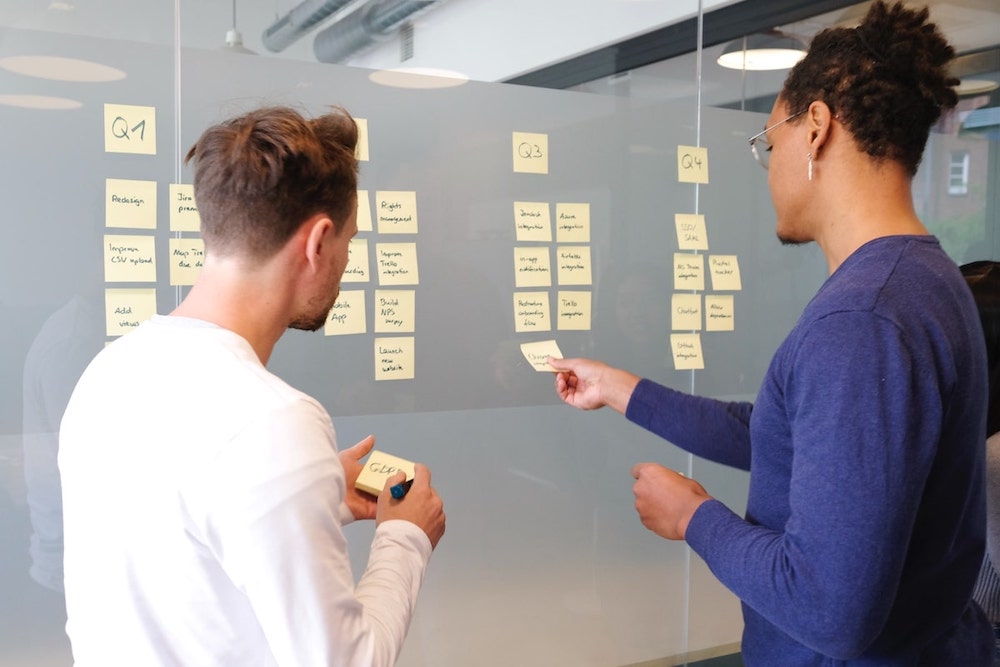What is project management?
First and foremost, it’s vital you are well aware of the definition of project management itself. Simply put, project management embraces all the actions taken with the aim of achieving the desired objectives of your project. This means using skills, knowledge, experience, as well as all methods, technics, and strategies so that you can lead your team towards successful completion of all the project-related tasks.
Who is a project manager?
If project management is to be effective, the responsibility for devising a good project management plan and executing it in accordance with the guidelines needs to be handed over to people who offer professional project management services. Project managers have an impressive range of interpersonal and communication skills, show great leadership potential, excel at problem-solving and critical thinking, and have vast knowledge about the world of business. The above are just a handful of crucial skills and competences that can guarantee the successfulness of project management processes.

5 phases of a project management life cycle
No matter if you are just purely theoretically interested in the topic, or if you are seeking some practical advice. Just imagine you are put in the position of someone who is supposed to manage a project (or many projects) for your organization. According to the Project Management Body of Knowledge Guide developed by the Project Management Institute, the project life cycle consists of 5 phases. Let’s have a closer look at them.
Project initiation phase
You start with your vision of the project. There are some abstract ideas in your head, some project-related concepts, all of which need to be clarified to the point you are able to convert them into a specific and meaningful goal. Once you know why you need to run the project, it’s advisable you create a project charter. It’s a document that entails all the important details connected with the goals and overall project scope (budget, limitations, expected timeframe, etc.). Then determine who your stakeholders are (i.e., people involved in the project), what roles they will take on, what communication requirements need to be established and how they are going to influence the process. At this point, you are not supposed to dig into any technical details — you just lay the groundwork for all the upcoming tasks.

Project planning phase
You have proceeded to the stage at which you need to be diligent and alert, as you are just about to handle more concrete aspects of your project plan. These include pinpointing technical concerns, establishing goals and deliverables, creating a thorough project schedule, working on your communication plan and trying to anticipate potential obstacles by creating a good risk management plan. It is also vital that work breakdown structure (WBS) is developed, which means that the project is broken down into smaller and thus more manageable components. During this stage, you ensure the scope of your project is defined, although it is still possible — and sometimes inevitable — to incorporate necessary changes in order to adjust the project plan to the changing needs or demands. Some project management methodologies (especially those that are based on the traditional approach) tend to particularly value the planning phase, to the degree it occupies a considerable amount of the overall project’s timespan.
Let’s focus on your goals now, as setting them up might be one of the most demanding aspects of the planning phase. You can rely on various methods, but there are two particularly helpful ones:
S.M.A.R.T.
The term represents 5 crucial characteristics of a goal, which are Specific, Measurable, Attainable, Realistic/Relevant and Timely. The criteria help project managers make sure that the goals established for the project are carefully analyzed, well-defined and achievable, which is supposed to minimize the risk of failure.
C.L.E.A.R.
The acronym stands for Collaborative, Limited, Emotional, Appreciable, and Refinable. This method is believed to better respond to the requirements of a modern, more dynamic working environment, one that demands greater flexibility, promotes efficient collaboration between employees and recognizes the significance of getting psychological benefits from work (praise, satisfaction, etc.).
Project execution phase
This project phase means your project team members set to work. Being a project manager requires you to oversee cooperation, facilitate workflows, track progress, prevent communication breakdowns and, in general, ensure that the project runs smoothly. What’s more, choosing the right set of collaboration tools might be a good way to boost your team’s productivity while making the work more convenient and easier.
Although the project monitoring phase is technically the fourth one, it’s essential you notice its close relationship with the previous one. In other words, there is no project execution without simultaneously occurring project monitoring and controlling. This is vital if you want your project objectives and project deliverables to be met. Also, it’s advisable you focus on cost tracking — analyzing status reports and other documents concerning the project performance can help you stay within budget, not to mention it will be of significant help and relevance for future projects.

Project closure phase
You managed to get to the final phase of the project management process. This means you need to present the final project deliverables to your stakeholders for approval. Project closing requires that everyone who has been involved in the project life cycle confirm the completion of the process. It’s the project manager who is responsible for officially releasing resources and reviewing all the paperwork in order to ensure all contracts have been terminated and all the relevant documents have been completed properly. The final stage is to prepare a report covering all the steps and actions taken during the project management phases and to store it in a secure place, such as cloud-based software.
Once this is all done, you can hold a meeting during which you and your team can reflect on your entire project, i.e., analyze both strengths and weaknesses of your strategies. Identifying areas for improvement and determining what contributed to the project’s success can help you draw conclusions that are likely to improve the way you lead your future project teams. Have you checked this box as well? Great news then! You can all go and start celebrating.
Project management process — final thoughts
Irrespective of how challenging the whole process truly is, project managers are expected to manage projects successfully. Managing embraces a variety of aspects, starting from clarifying ideas and devising a good strategy during the planning stage, through careful monitoring of how the project execution develops, to finally deliver quality results. Obviously, the notion of successfulness is arbitrary, so it’s impossible to come up with a one-size-fits-all way of measuring it. However, if at the end of each of the project phases specific task deliverables and project goals are achieved, you can consider it to be a clear indication of the effectiveness of your project management process.